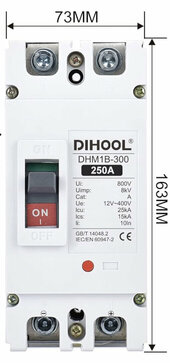From Wills old 48v off grid 240v split phase blueprint, he listed current connected 300 amp bus bars when going from 2x6500ex to a six rack of lifepower4.
So each 6500ex says 153amps per inverter for battery connection. But the solar setting charges at 60amps and the ac output is set at 60amps. So is the 153amps all this combined plus a bit more for the conversion loss?
Also, if I wanted to connect 4x6500ex to the same rack mentioned above, I would need a 300amp for each 2 inverters, (red and black) and a 600amp to the rack from each of those 300amp bars? Do I have that correct? Also, 2/0 is good for all except from the 600amp to rack which needs 4/0…which I’m running based off Wills blueprint…correct?
If I added another six pack rack in the future, I could connect it to the 600amp bus bar mentioned above via 4/0….correct?
Or better yet, one 600amp bus bar, all inverters connect to and racks can too…?
So each 6500ex says 153amps per inverter for battery connection. But the solar setting charges at 60amps and the ac output is set at 60amps. So is the 153amps all this combined plus a bit more for the conversion loss?
Also, if I wanted to connect 4x6500ex to the same rack mentioned above, I would need a 300amp for each 2 inverters, (red and black) and a 600amp to the rack from each of those 300amp bars? Do I have that correct? Also, 2/0 is good for all except from the 600amp to rack which needs 4/0…which I’m running based off Wills blueprint…correct?
If I added another six pack rack in the future, I could connect it to the 600amp bus bar mentioned above via 4/0….correct?
Or better yet, one 600amp bus bar, all inverters connect to and racks can too…?
Last edited:







